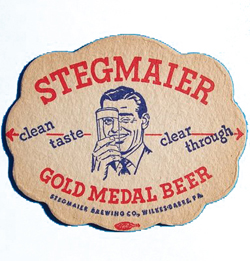
Is my beer bad?
William Bull Brewery head brewer, writer and educator on the subject of beer, Neal Cameron, takes a look at some common faults in beer.
Aged/Oxidised
The best conditions for storing beer are short, short, short, cool and dark. Australia is big, big, big, hot and sunny. You do the math. Look for the best before date, buy fresh and if you see your favourite tipple cooking in the sun in your local drive-through, assume it has the beer equivalent of foot and mouth and leave well alone. Aged or oxidized beers are dull, with cardboardy/papery flavours, and any fresh hoppiness or maltiness will have been summarily dispatched. And if the beer doesn’t have a best before date, then don’t buy it on principle.
Infection
Self-preservation is hard-wired into us; if you recoil in horror with the first smell or sip of a beer (assuming it’s not your first gueuze or lambic) then your finally tuned defence system is telling you something. Infections are oh-so-common for the homebrewer, but sadly a few of our commercial micros occasionally put out a shocker for which there is little excuse. Unfortunately if it’s a good place for yeast to live, it’s also a good place for about a million other organisms whose purpose is for evil rather than good. Vinegar, sour or harsh bitterness, unexpected cloudiness and just plain unpleasantness shows something is wrong.
Solvent
If you are a homebrewer in Australia and brew in the summer without the aid of refrigeration, things may all happen a little too quickly. If your brew smells like the wife’s nail polish, this could be the cause. Hard-pressed yeast doesn’t clean up after itself, and ethyl acetate is amongst the trail it leaves. Keep it cool and slow.
Diacetyl
In a word, butterscotch. Often caused by fermenting too long. Yeast euthanizes when its glorious work is done and as it falls apart, it turns into a single-cell Pandora’s Box with all sorts of unpleasantness running amok. Although ironically, bottling too early can leave diacetyl produced during fermentation un-scavenged. .
Sulphur
Life’s too short to spend what little time we have sniffing sulphur in our beer. Eggs (H2S) or sweet corn (DMS) do not rank highly on the list of positive beer traits. The best of lager yeasts produce sulphur, but given time to chill they clean-up after themselves. Perhaps the most pernicious trait of DMS is that it masks many good aromas, particularly hop oils.





